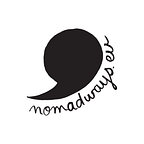Non-Violent Theatre was a project developing competencies to communicate in a nonviolent way — acknowledging own and others’ needs, recognising and expressing emotions and building peaceful relations with young people and co-workers. The aim of the project was to deal with situations of conflict or misunderstanding in the work environment where reaching a compromise is needed for common good and growth. As much as conflicts are natural for human relations our concern is not to let them threaten the basic sense of safety when a person feels their needs are endangered which might lead to violent defensive reactions.
To do so, we had the pleasure to work with the trainers Katarzyna Stepien and Marta Skorczynska who are experienced in facilitating embodied practices, drama and multi-cultural groups. At the workshop, they applied many tools to raise the awareness of nonviolent communication: the language of the Giraffe, the Theatre of the Oppressed, and applied drama methodology. In order to pass the knowledge, they have written this wonderful e-book that contains exercises and activities to tackle the method.
“Non-Violent Theatre for Artivists”
This booklet explores a variety of tools to enrich and improve our nonviolent communication and to understand the nonviolent theatre as a method in non-formal education.
Here, Katarzyna and Marta have gathered some of the tools shared, explored and developed during the project to use in a group process in order to explore the main questions asked:
What are the resources of a youth worker to live peacefully and build a peaceful community? Which are the effective communication strategies when working towards transforming conflict situation towards peaceful and constructive solution?
>> Discover the answers by downloading our e-book from here <<
In our booklet, we explore the activities in several chapters.
Mindfulness practices
At the core of NVC lies our heightened awareness of own feelings and needs. In order to develop this non-judgemental ability to notice, observe and recognise what is going on in one’s inner world as well as in the world around them, developing the skill of mindfulness is vital. Mindfulness is known to decrease stress and anxiety thus bringing more calmness and peace, and increasing creativity, attention, resilience and equanimity.
Nonviolent communication
The information presented in this chapter, explaining briefly the model of Nonviolent Communication, which is an inspiration for all the described activities and the whole training programme, draws from the work of Marshall B. Rosenberg, Ph.D. as presented in his book, “Nonviolent Communication: A Language of Life”, which we recommend to read as a basic theory input, as well as from the “NVC Instruction Guide” by Jiva Minske, a shortcut through the model and its application.
Vocabulary of feelings and needs
Learning NVC — a language of the heart — is like learning a foreign language. It’s crucial to have a set of vocabulary to be able to communicate. During this TC we offered participants a couple of card games in order to practice the Feelings and Needs vocabulary. The cards can be designed according to the needs of the group.
Drama methods for NVC
Applied drama gives the opportunity for embodied learning and using dramatic conflicts for practising NVC approach and specific skills. Drama as methodology is based on role-playing and analysing body expression in different situations, in relations between people when playing. It pushes the learner to step out from their thoughts into action, which gives an opportunity to test one’s readiness to use the NVC model in real-life situations. Some of the techniques presented here are used also to expose the internal processes, such as needs, for example, giving them a body to be expressed in a more visible, tangible way.
Embodiment methods for learning NVC
How is the body related to Nonviolent Communication? It is through sensations in the body that we notice what we then label as feelings. When we move, we can access our feelings and needs through ‘felt sense’ and bring more aliveness thus increasing chances of connecting with others. Bringing more awareness to the body allows us to read its messages in a clearer way, accessing body intelligence and tapping into inner resources.
About the training in France
The Erasmus+ Training Course “Non-Violent Theatre” was an international project developing competencies of youth workers to communicate in a nonviolent way: learning to acknowledge own and others’ needs, recognise and express feelings, build peaceful relations with young people and co- workers. The project focused on preparing youth leaders, trainers, project coordinators, to deal with situations of conflict or misunderstanding in their work environment, where reaching an outcome based on empathy and honesty is needed for the common good and growth.
The Training Course took place in Homade, Brivezac in France between 27th July and 9th August 2019, gathered participants from 8 countries and was facilitated by Marta Skorczyńska (PL) and Kasia Stępień (PL/UK).
About Nomadways
We craft international workshops for artists, educators and youth workers. Together we create pedagogical artwork, share and invent practical solutions to social problems.
- If you are interested in our work, subscribe to our monthly news. Or follow us on facebook, twitter and instagram.
- Join our community of artivists here.
- Visit our website nomadways.org
